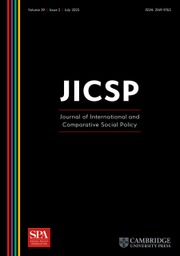Article contents
Policy or window dressing? Exploring the impact of poverty reduction strategies on poverty among the Canadian provinces
Published online by Cambridge University Press: 09 March 2020
Abstract
Poverty reduction strategies (PRS) have become a popular instrument for addressing poverty globally. According to their proponents, PRS focus and coordinate poverty reduction efforts in order to overcome traditional economic and socio-demographic obstacles and reduce poverty unconditionally. According to their detractors, however, governments use PRS as ‘window dressing’ to gloss over unsuccessful and/or partial poverty reduction efforts. In Canada, all ten provinces have committed to adopting PRS. In this study, I identify the timing of the introduction of PRS action plans and explore whether they have tended to coincide with changes in provincial poverty levels. I find that more often than not levels have actually dropped before rather than after the introduction of PRS. This suggests that governments may have indeed used PRS as window dressing – but to showcase and claim credit for poverty reduction successes.
- Type
- Research Article
- Information
- Journal of International and Comparative Social Policy , Volume 35 , Issue 1: SI: Recent Social Policy in Canada and the United States , February 2019 , pp. 112 - 136
- Copyright
- Copyright © 2018 Informa UK Limited, trading as Taylor & Francis Group
References
- 10
- Cited by


